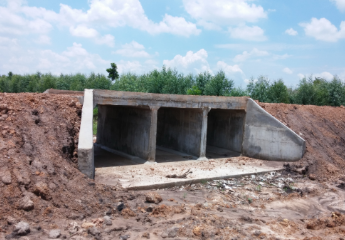Please fill out the Download Section (Click here) below the Comment Section to download the Full PDF
Table of Contents
*Click the content to move to the section
1. What is the Coefficient of Subgrade Reaction?
2. Application Method of the Coefficient of Subgrade Reaction in Structural Design
3. Coefficient of Subgrade Reaction During Earthquakes
1. Overview
In the field of architecture and civil engineering, structures are always erected with the ground serving as the reference point. Both aboveground and underground structures must consider the influence of the ground.
Therefore, assessing the stability of the ground during the structural design process of a building is a crucial task. In addition, during the design process, it is necessary to consider the bearing capacity of the ground and incorporate it into the structural design, just as when calculating the loads imposed on the structure.
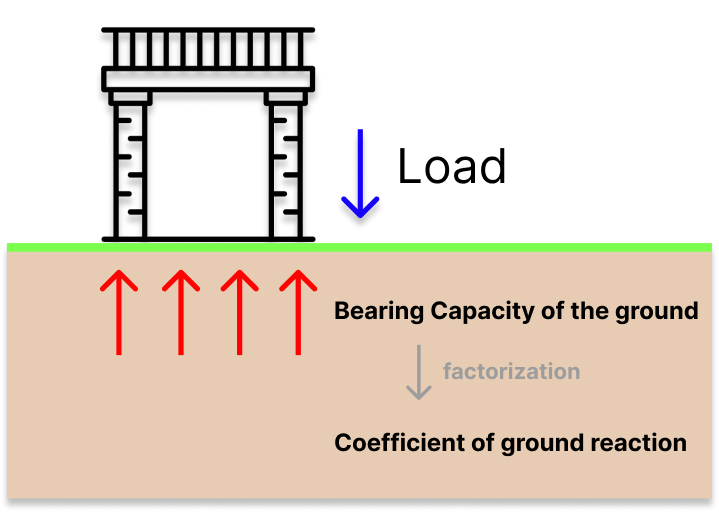
The coefficient of subgrade reaction refers to the settlement ratio of the ground caused by the load acting on the foundation. It represents how much the ground can withstand when subjected to loads from the structure, assuming the ground behaves like a spring.
In other words, it quantifies the bearing capacity of the ground.
The coefficient of subgrade reaction is a constant that represents the stiffness of the ground. It can be determined through plate bearing capacity test or standard penetration tests. Even for the same type of soil, the coefficient of subgrade reaction can vary depending on the size, shape, depth of embedment, and direction of the applied load on the foundation.
A larger coefficient of subgrade reaction indicates that the soil is more stable, dense, less compressible, and has a higher bearing capacity. When the size of the foundation is larger, the settlement increases, leading to a decrease in the ground reaction coefficient. Conversely, as the embedment depth increases, the settlement decreases, resulting in an increase in the coefficient of subgrade reaction.
During structural design, the coefficient of subgrade reaction is applied to incorporate the bearing capacity of the soil into the structure.
2. The application method of the coefficient of subgrade reaction during normal (permanent) conditions
For the most commonly applied retaining walls, the calculation of coefficient of subgrade reaction for design purposes refers to the "KDS 44 90 00:2021 Design Standards for Road Retaining Structures."
However, the mentioned standard provides only references to the factors that should be considered without providing clear equations or criteria, which can actually cause confusion among engineers.
To supplement the explanation, I will refer to the "Interpretation of Design Standards for Road Bridges" (2008) and the "Design Guidelines for Roads" (2020), which have been applied in practical engineering, in order to provide further information.
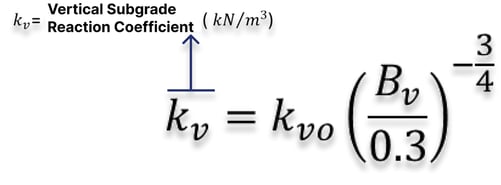
The vertical subgrade reaction coefficient for the permanent condition of a foundation can be calculated using the following equation.
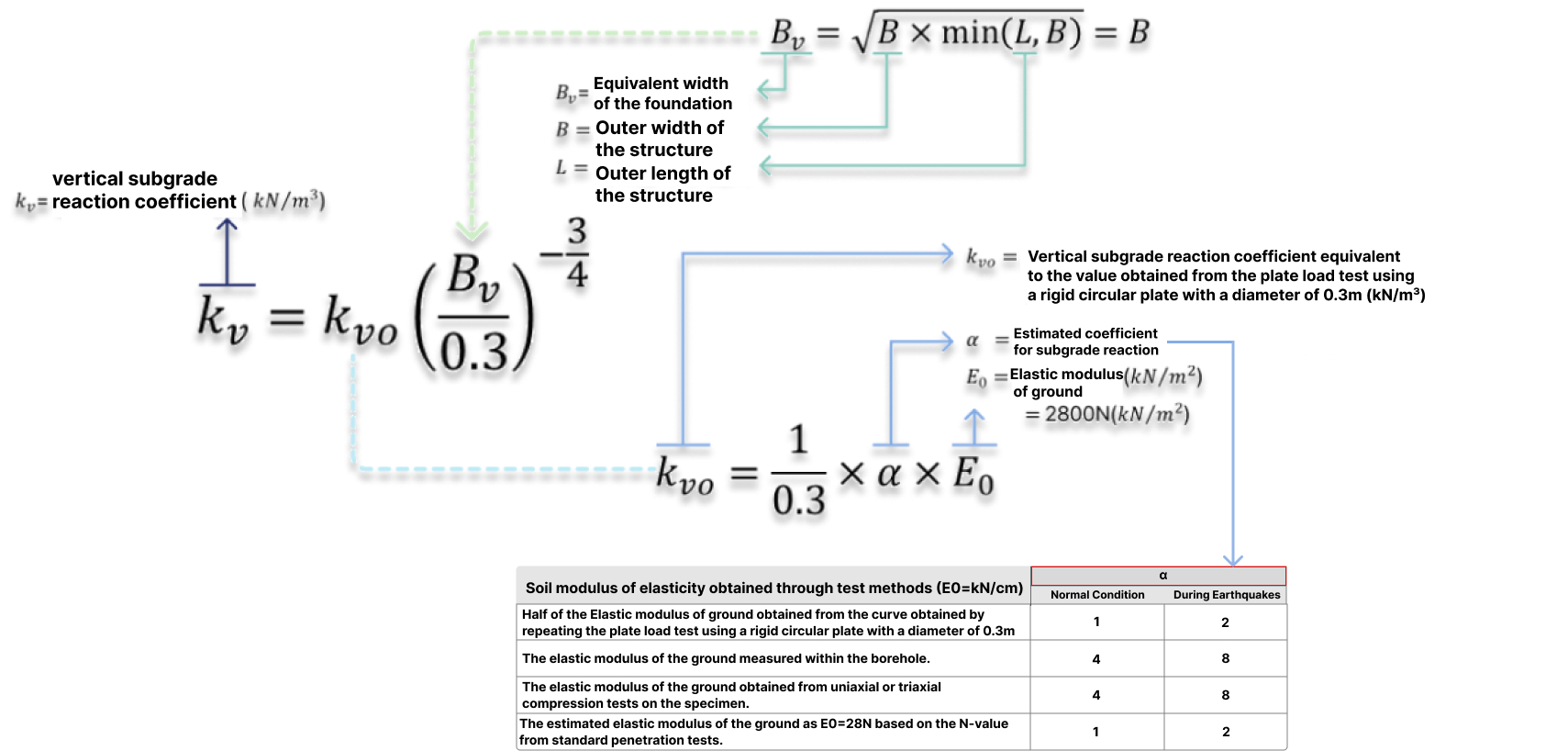
The vertical subgrade reaction coefficient in the vertical direction is calculated using the equivalent width of the foundation and the vertical subgrade reaction coefficient. For culverts, it is common practice to use a value of 1 for the ground reaction estimation coefficient (a) in the vertical subgrade reaction coefficient.
As for the elastic modulus of the ground (E0), it is typically assumed to be 2,800 N.
However, in addition to the value of 2,800 N, the elastic modulus (E0) can also be applied differently depending on the soil conditions, such as 400 N, 600 N, 1,000 N, 1,200 N, etc.
- Design Practices for National Highway Construction (Ministry of Land, Infrastructure and Transport 2021)
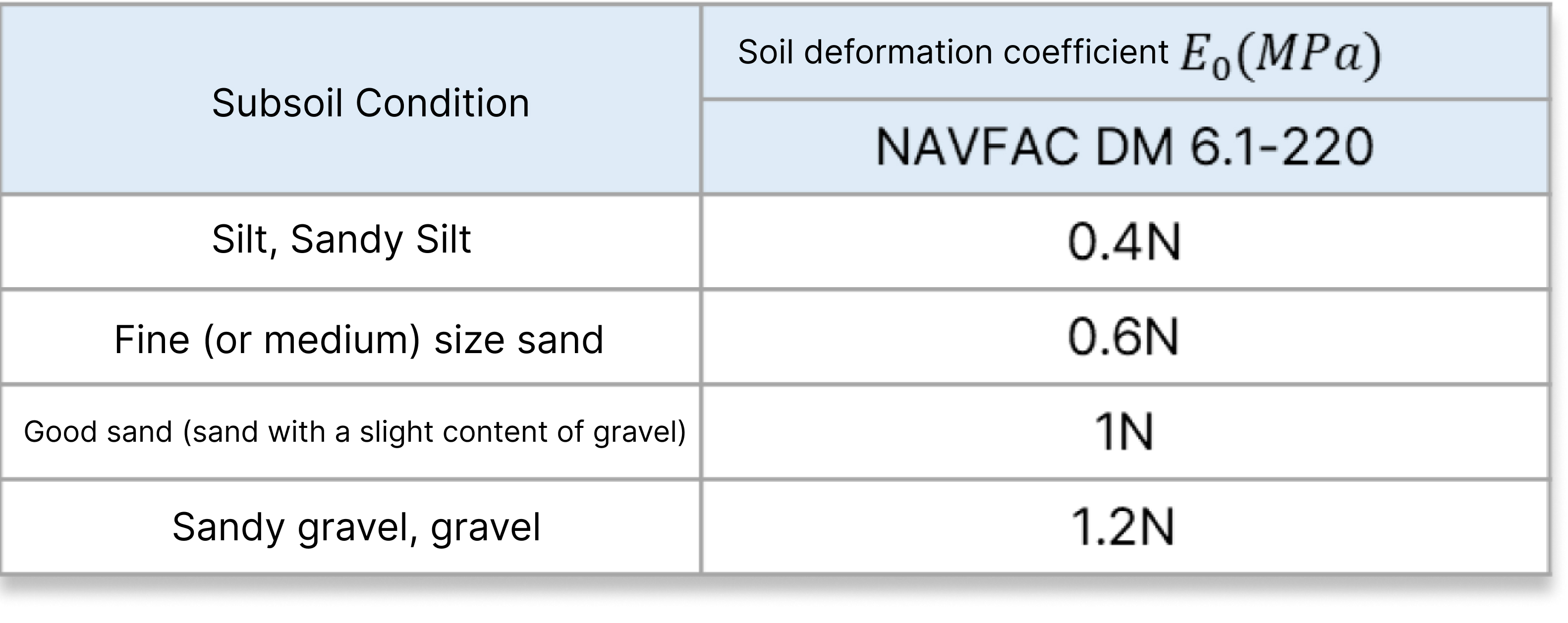
3. Coefficient of Subgrade Reaction During Earthquakes
What about during an earthquake?
In seismic conditions, the subgrade reaction coefficient is calculated by applying the value of Ed instead of E0 to account for the dynamic characteristics of the ground.
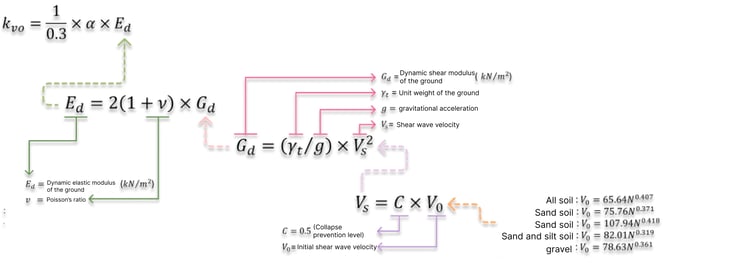
The dynamic elastic modulus, Ed, of the ground is calculated based on the dynamic shear modulus, Gd, and the Poisson's ratio of the ground.
The dynamic shear modulus, Gd, is determined by the shear wave velocity, Vs, of the ground.
The shear wave velocity, Vs, can be determined by the initial shear wave velocity, V0, and there are two main methods to obtain the initial shear wave velocity:
- Checking design manuals and guidelines
- Utilizing data obtained from ground investigation
The calculation method for the initial shear wave velocity, V0, applied in Midas Civil is detailed in the following references:
- [KDS 64 17 00:2019] (Design Standards for Harbors and Fishery Ports) - Seismic Design Section 4.1.2, Subgrade Classification Explanation (4)
- Performance Evaluation Guidelines for Existing Facilities (Foundations and Subgrade) - It provides detailed information on the correlation between the standard penetration test (N-value) and shear wave velocity (Vs).
These references provide detailed explanations and formulas regarding the correlation between the standard penetration test (N-value) and shear wave velocity (Vs) for the evaluation of seismic performance in foundations and subgrades.

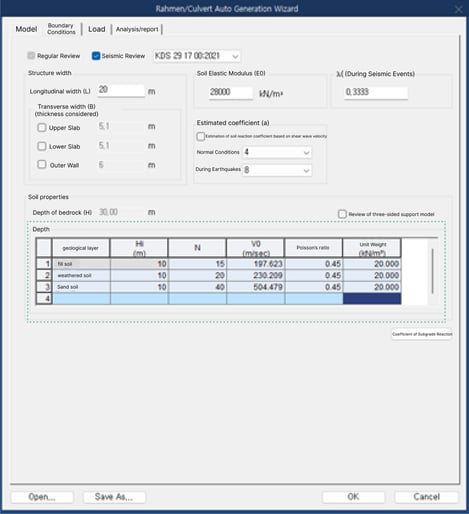
In other words, knowing the initial shear wave velocity that can be obtained through the N-value allows us to determine the subgrade reaction coefficient during seismic events.
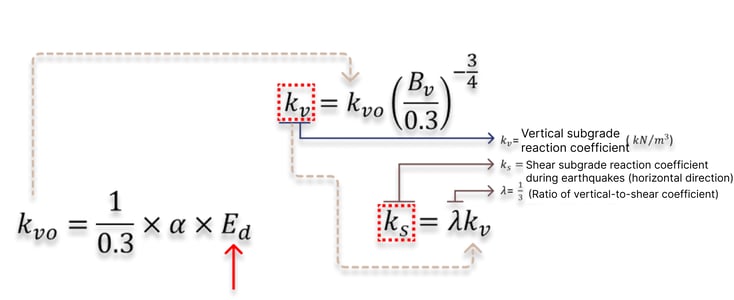
If the dynamic elastic modulus Ed of the ground has been calculated in reverse order, the shear subgrade reaction coefficient during earthquakes can be calculated by multiplying the vertical subgrade reaction coefficient and the vertical-to-shear coefficient ratio.
In the case of normal conditions (or steady-state conditions), you can also calculate the shear subgrade reaction coefficient by multiplying the vertical subgrade reaction coefficient by the vertical-to-shear coefficient ratio.
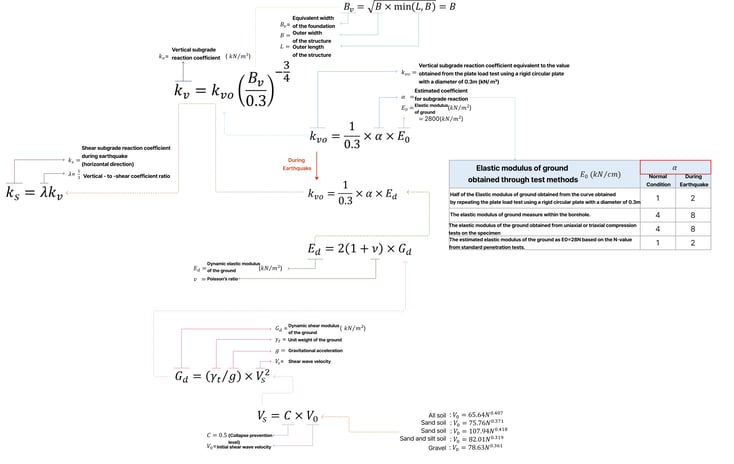
In addition to the method explained earlier, the Road Design Manual (Chapter 7: Underground Roadways) also provides the following regulations regarding the initial elastic wave velocity V0.

Additionally, Ed values can be obtained by applying the initial shear wave velocity (V0) from data obtained through elastic wave exploration.
Engineers can make appropriate decisions regarding the methods based on design conditions and situations.
4. Conclusion
Due to the variation in the magnitude of loads acting on structures depending on the characteristics of the ground, the calculation of the subgrade reaction coefficient is a critical and careful task in structural design. Structural engineers must determine the subgrade reaction coefficient through proper judgment and incorporate it into the structural design to account for the varying load sizes imposed by the ground conditions.
👉Please fill out the Download Section (Click here) below the Comment Section to download the FULL PDF.
 Get Started midas Civil
Get Started midas Civil
 Featured blog of this week
Featured blog of this week









